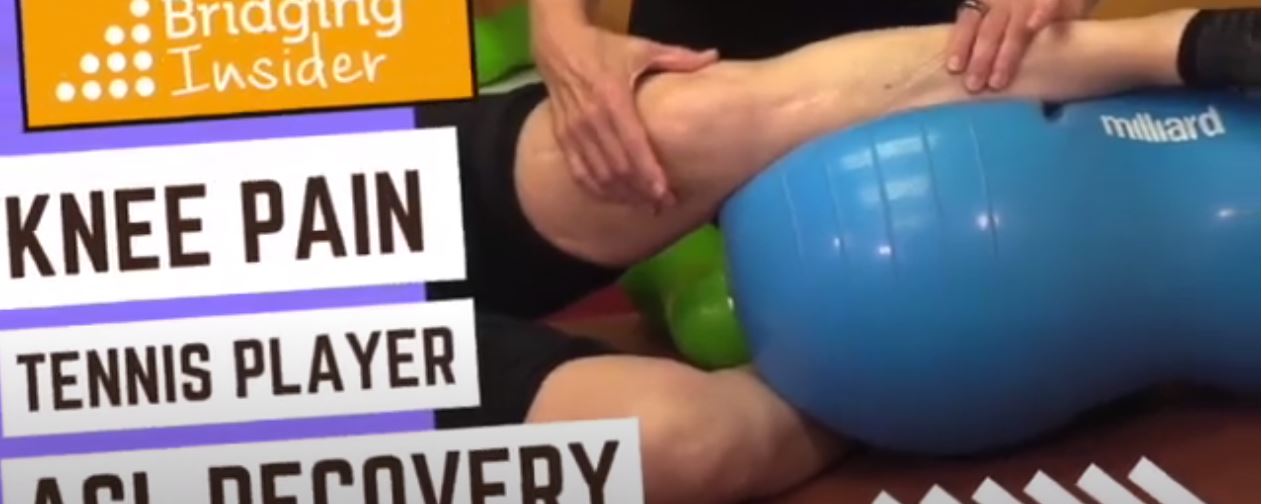Knee Still Painful or Uncertain After ACL Repair?
ACL sprains and tears are among the most common types of knee injuries in the U.S., with more than a quarter million people injuring their anterior cruciate ligaments every year.
Most people have some surgery-related pain and discomfort for the first week or so. Not surprisingly, pain from knee surgery decreases with time. By the end of a week or two at the most, you should have very little discomfort.
vantheilmd.com
Are you resigned to your lingering post-procedure pain? With Bridging, further change is possible!
Tennis player’s journey with ACL repair and pain
This week’s guest on our YouTube channel, Lisa, has had ACL issues going back many years.
- She had surgical repair via scope and then reconstruction.
- She did all the recommended rehab at the best places around.
- She still actively plays and coaches tennis.
BUT- she still has pain and still has to ice her knee. Why? What else might be impacting how her knee functions?
Have a look to see what we found and how her knee function changed with a bit of Bridging.
ACL repair recovery needed more
It’s been weeks, months, or years since surgery. You SHOULD have very little pain or discomfort. But you DO have pain and discomfort. Why?
Three primary reasons you still have pain are:
- Communication offline: The body part is fixed, healed, and moves. The seamless communication between muscles for fluent movement is often glitchy.
- Gaps in transitions: Muscles don’t have just a single job to do. They are constantly shifting partners as angles and speed change. After surgical recovery the ease of these muscle transitions is often impaired. You only feel the instability or ‘catch’ and don’t know why.
- Helpers impacted also: Muscles and joints get strength and stability from their neighboring muscles. The trauma of injury or surgery may have side-lined this partnership leaving adjacent muscles unable to provide support when needed.
How does Bridging help recovery?
As part of our process to help you move and feel better, there are three unique characteristics we look for:
- How does the body overall support the impacted area? The body moves as a system. If an adjacent joint is rigid or unstable it impacts your recovery.
- Is movement available in three planes of motion? Side to side, bend/extend, and rotation in/out must be available at each joint.
- How does movement transition across the impacted area? Joints work as part of an overall system of movement. Inability to transition at odd angles or degrees of motion will cause pain or instability.
As we work through the layers of this process to reset muscle relationships you regain comfort, movement ease, and confidence. Resetting muscle relationships is done by using a specific stretch response. The process is gentle, fast and long-lasting!
Are you still hoping your knee (or other body part) will function and feel better? It’s just 2-3 Bridging® sessions away!

